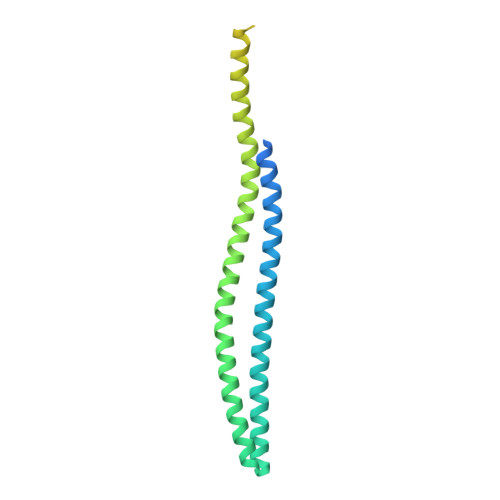Bacterial Vipp1 and PspA are members of the ancient ESCRT-III membrane-remodeling superfamily.
Liu, J., Tassinari, M., Souza, D.P., Naskar, S., Noel, J.K., Bohuszewicz, O., Buck, M., Williams, T.A., Baum, B., Low, H.H.(2021) Cell 184: 3660-3673.e18
- PubMed: 34166615
- DOI: https://doi.org/10.1016/j.cell.2021.05.041
- Primary Citation of Related Structures:
6ZVR, 6ZVS, 6ZVT, 6ZW4, 6ZW5, 6ZW6, 6ZW7 - PubMed Abstract:
Membrane remodeling and repair are essential for all cells. Proteins that perform these functions include Vipp1/IM30 in photosynthetic plastids, PspA in bacteria, and ESCRT-III in eukaryotes. Here, using a combination of evolutionary and structural analyses, we show that these protein families are homologous and share a common ancient evolutionary origin that likely predates the last universal common ancestor. This homology is evident in cryo-electron microscopy structures of Vipp1 rings from the cyanobacterium Nostoc punctiforme presented over a range of symmetries. Each ring is assembled from rungs that stack and progressively tilt to form dome-shaped curvature. Assembly is facilitated by hinges in the Vipp1 monomer, similar to those in ESCRT-III proteins, which allow the formation of flexible polymers. Rings have an inner lumen that is able to bind and deform membranes. Collectively, these data suggest conserved mechanistic principles that underlie Vipp1, PspA, and ESCRT-III-dependent membrane remodeling across all domains of life.
- Department of Infectious Disease, Imperial College, London, UK.
Organizational Affiliation:
















